Choosing Purchasing & Handling Wood for Oven
Posted by ilFornino New York on 18th Apr 2020
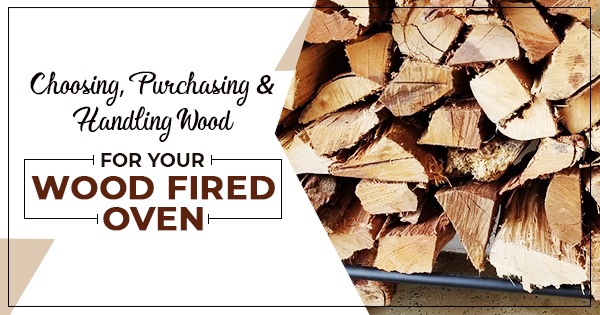
While it may sound obvious, wood fired pizza ovens are fueled by wood. The trick is, which wood to use and where to get a reliable source at a reasonable price. Getting your indoor or outdoor oven hot enough with a safe and clean type of wood is paramount. All your efforts in creating a delicious authentic Neapolitan pizza, or any other type, for that matter, would be negated by not using the proper wood.
CHOOSING YOUR WOOD
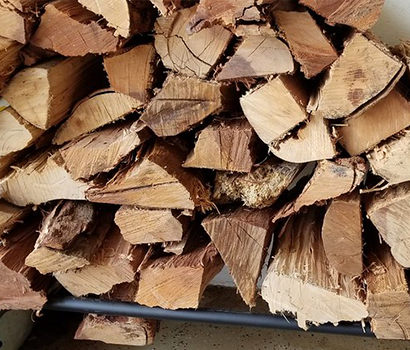 Things to keep in mind are that there are so many varieties of wood in nature. Based on your region, you may have an abundance of particular types of wood. The wood that you choose must be dried or seasoned, as freshly cut wood won’t burn cleanly. Naturally dried, or kiln dried are good to use. If you have access to freshly cut wood, plan on about 6 to 9 months of air-drying to achieve the proper moisture content. Wood with lots of sap or oils are not good for cooking as they create an acrid by-product called Creosote and are dangerous for your health. Creosote is also known to build up inside your chimney causing internal fires. Avoid wood that is pressure treated with chemicals, laminated or painted wood, as well. Wood should also be free of bark. You also need to be mindful that various woods burn at different temperatures. In order to get your pizza oven ready to bake, keep in mind that authentic Neapolitan pizza requires a very high cooking temperature. To achieve that, a very high temperature producing wood is required. Hardwood is best for high temperature as it offers greater heat production with longer burning times. Examples of hardwoods for ovens are: Oak, birch, maple, ash and walnut. You may also consider certain flavored woods for flavor enhancing. Wood such as cherry, hickory, mesquite, apple, alder and pecan, can impart unique flavor. They are not necessarily used for heat and can be purchased in small quantities. They should be used sparingly as to not overpower your food. A little goes a long way. You should purchase a variety of these flavoring woods so you can get a sense of the aroma and suggested foods that would pair with each type. Again, your region may dictate which can be secured at a reasonable price.
Things to keep in mind are that there are so many varieties of wood in nature. Based on your region, you may have an abundance of particular types of wood. The wood that you choose must be dried or seasoned, as freshly cut wood won’t burn cleanly. Naturally dried, or kiln dried are good to use. If you have access to freshly cut wood, plan on about 6 to 9 months of air-drying to achieve the proper moisture content. Wood with lots of sap or oils are not good for cooking as they create an acrid by-product called Creosote and are dangerous for your health. Creosote is also known to build up inside your chimney causing internal fires. Avoid wood that is pressure treated with chemicals, laminated or painted wood, as well. Wood should also be free of bark. You also need to be mindful that various woods burn at different temperatures. In order to get your pizza oven ready to bake, keep in mind that authentic Neapolitan pizza requires a very high cooking temperature. To achieve that, a very high temperature producing wood is required. Hardwood is best for high temperature as it offers greater heat production with longer burning times. Examples of hardwoods for ovens are: Oak, birch, maple, ash and walnut. You may also consider certain flavored woods for flavor enhancing. Wood such as cherry, hickory, mesquite, apple, alder and pecan, can impart unique flavor. They are not necessarily used for heat and can be purchased in small quantities. They should be used sparingly as to not overpower your food. A little goes a long way. You should purchase a variety of these flavoring woods so you can get a sense of the aroma and suggested foods that would pair with each type. Again, your region may dictate which can be secured at a reasonable price.
SECURING AND HANDLING OF WOOD
Once you have honed in the type of wood that would suit your application requirements, based on your location, you need to find a reliable source that supplies this wood. Depending on your needs, you may want to purchase small, medium or large quantities. You must consider the available space to store the wood, and how often you intend to cook with your oven. Typically, the price of wood drops dramatically when you purchase in larger quantities. Part of this is due to the number of deliveries you will require during the year. Securing wood is just the start. You will need to use various sizes of wood during each cook. Typically, wood comes in 16-inch lengths, however, they may vary in diameter. Wood too large may be difficult to ignite. As such, you may consider a log splitter to allow you to create various sizes for you oven. You can use an axe, manual, or hydraulic log splitter. Great care must be exercised with an axe. A manual log splitter is a low cost alternative but also requires some effort and can cause fatigue for large quantities of logs. The best long-term investment is a hydraulic log splitter for speed and ease of use. They come in both manual or electric versions.
Manual Hand-Held Log Splitter on the left. It works via repetitive impact on the log. And Typical Hydraulic Log Splitter on the right.
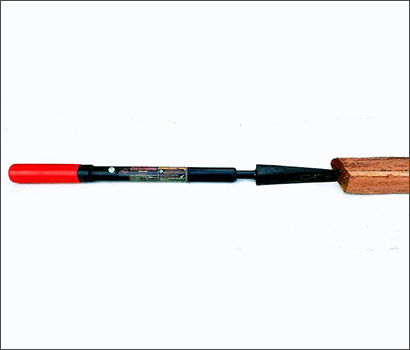
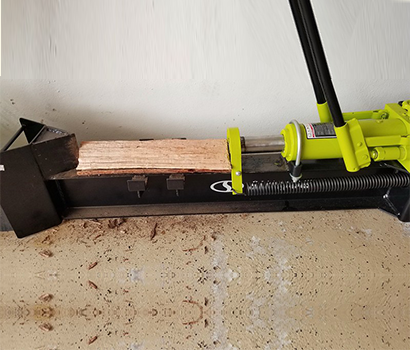
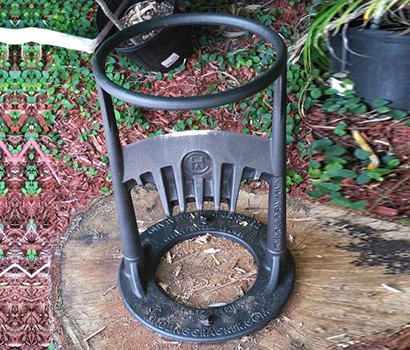
Large chunks are required for creating a long steady burn. Thinner wood can ignite quickly, or add a needed boost of flame required for pizza. Finally, you may want very small pieces for kindling to get your fires started. Since wood supplied is typically similar in size, you may want to invest in a hydraulic log splitter to reduce the size and a kindling cracker to make your own kindling. That way, you don’t have to buy separate sized wood and store large quantities of each size, since you can make them on demand in manageable batches. Image of a Kindling Cracker.
CONFIRMING THE USABILITY OF YOUR WOOD
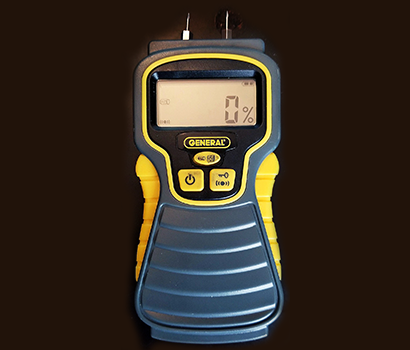 Another issue you should be mindful of is the moisture content of the wood you use in your oven. It is recommended that somewhere between 15% and 20% moisture is ideal for getting your fire started and achieving an effective burn rate. Naturally dried or kiln dried wood would need to specified when ordering. Once received, it is important to protect you wood from the elements that would alter its moisture content. Purchasing a moisture meter is a good investment, as you can test each log for its moisture content.
Another issue you should be mindful of is the moisture content of the wood you use in your oven. It is recommended that somewhere between 15% and 20% moisture is ideal for getting your fire started and achieving an effective burn rate. Naturally dried or kiln dried wood would need to specified when ordering. Once received, it is important to protect you wood from the elements that would alter its moisture content. Purchasing a moisture meter is a good investment, as you can test each log for its moisture content.
This moisture meter is especially useful when seasoning your own wood, as it will indicate that it has been seasoned to perfection. If you find it hard to justify purchasing a moisture meter, consider that it can also be used to detect water damage in walls.
GETTING YOUR WOOD READY TO FIRE UP IN YOUR OVEN
There are a host of techniques as to how to start a fire in your oven. It appears that people have been successful in some fashion with each of these techniques. I suggest that you try a few to see what your experience has been for your particular oven and use that technique going forward.
If your oven is movable, position it in a well-ventilated area that you want to cook in. Make sure that the interior is clean before introducing your wood for starting your fire. Smoke and glowing embers that may escape the chimney will also dictate the distance from other structures or plants.
Consider the type and size of your oven and assign an amount of wood that will insure thorough heating, and sustained heat throughout the cooking cycle. If your wood storage isn’t close, such as under your oven, you may want to use large sturdy bags, or rolling aids to transport it close to your oven. I usually keep kindling and medium sized wood in a large plastic bin nearby. That way, you have instant access for the size you need.
PROPER OVEN IGNITION
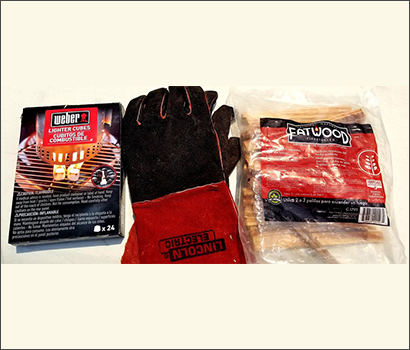 As you assemble the wood in the oven, you should also have some sort of fire starter strategically dispersed to insure the flame will catch the kindling on fire. Do not use lighter fluid as a fire starter. There are products that are specifically made for that purpose. FATWOOD is one such product, however, as an oily wood and will initially produce smoke, so use sparingly. Here is the sample of fire starters and protective gloves
As you assemble the wood in the oven, you should also have some sort of fire starter strategically dispersed to insure the flame will catch the kindling on fire. Do not use lighter fluid as a fire starter. There are products that are specifically made for that purpose. FATWOOD is one such product, however, as an oily wood and will initially produce smoke, so use sparingly. Here is the sample of fire starters and protective gloves
If your oven has a flue damper, makes sure it is in the full open position. No matter if you do a bottom up or top down approach, I like to make sure to start a small fire at the very top just under the chimney exhaust. That way, you can heat the air in the chimney pipe to create a more powerful initial updraft. Position your door with a slight opening on one side to feed the fire with oxygen.
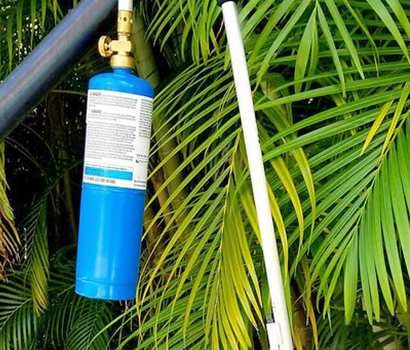 Sometimes, for whatever reason, if you wood isn’t catching fire you may want to explore some options. Some people preheat their wood in a 250-degree oven for an hour or two. This drives out any excess moisture. This technique is also used during the cooking cycle where additional wood is placed in the oven, away from the flames, before being introduced on top of the flaming pile. This helps insure a rapid and smokeless ignition of the newly introduce wood.
Sometimes, for whatever reason, if you wood isn’t catching fire you may want to explore some options. Some people preheat their wood in a 250-degree oven for an hour or two. This drives out any excess moisture. This technique is also used during the cooking cycle where additional wood is placed in the oven, away from the flames, before being introduced on top of the flaming pile. This helps insure a rapid and smokeless ignition of the newly introduce wood.
One other technique is to have a propane bottle with a long extension and blast the stubborn areas that refuse to catch fire. I use this method to actually start the initial fire, as the flame will reach to areas deep inside the oven. This is the image of a Propane Torch.
Have a bellows or blowpipe available to target oxygen to an area of concern. This will initiate a strong hot flame to start the newly applied wood or resurrect flames in existing wood. This is especially useful when adding more wood to maintain the presence of flames to replenish floor temperature and properly cook your Neapolitan pizza. When adding wood, be mindful to avoid quenching the flames below by not allowing oxygen to circulate.
If smoke emanates from the front of the wood fired oven, or if flames are detected coming out of the top of the chimney, it may be that you have overloaded the initial amount of wood to start your oven. An incremental approach may avoid this and also creates more hot coals that can be distributed to evenly and efficiently heat the oven floor. Take your time and gauge your timing before introducing your pizza.
SAFETY IS PARAMOUNT
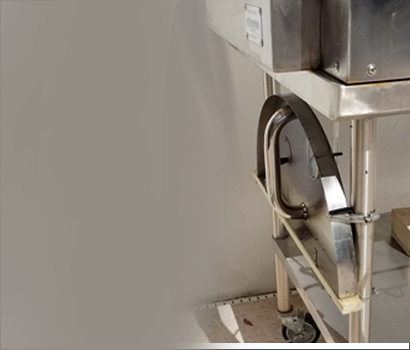 To insure a safe cooking experience, make sure you have a fire extinguisher that is current with its inspection. The heat generated by a roaring fire, especially when first starting is extremely high. Have proper tools of sufficient length to allow you to reposition or clean your wood fired oven without risk of burning yourself. Make sure you have a pair of welders or fireproof gloves when getting too close to flames or handling metallic oven doors. Gloves have a dual purpose. They protect against heat and are handy for picking up wood without getting splinters.
To insure a safe cooking experience, make sure you have a fire extinguisher that is current with its inspection. The heat generated by a roaring fire, especially when first starting is extremely high. Have proper tools of sufficient length to allow you to reposition or clean your wood fired oven without risk of burning yourself. Make sure you have a pair of welders or fireproof gloves when getting too close to flames or handling metallic oven doors. Gloves have a dual purpose. They protect against heat and are handy for picking up wood without getting splinters.
Door Holder Suggestion: When it comes to oven doors, be mindful of the temperatures they can reach. Carefully place your oven door in a dedicated area. Make sure it is away from pets or children and won’t blow over in a strong wind.
When discarding your coals after your cooking session, make sure to place it in a fireproof container. Make sure that the coals are cool to the touch before cleaning your oven.
SUMMARY:
Once you have organized all the above aspects of choosing, securing, storing, sizing and igniting firewood, your workflow will be routine. You should have repeatable and reliable results.











